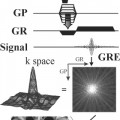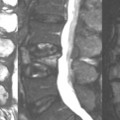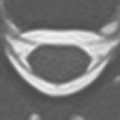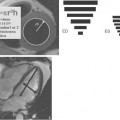5 Multichannel Coil Technology: Introduction
The demand in MRI for increased anatomic coverage, higher spatial resolution, and decreased acquisition time has required the development and implementation of hardware that improves the signal-to-noise ratio (SNR) and maximizes the efficiency of data handling. The SNR of an MR image is influenced by a variety of factors including the selected pulse sequence and magnet strength. However, the size of a signal-receiving coil element, its proximity to the tissue being examined, and the number of RF receive channels also greatly affects the quality of an image and the time necessary to acquire it.
Early MR systems collected signal through linear polarized, single-element coils and transferred data to the computer that performed the Fourier transformations through one low-bandwidth RF receive channel. Obtaining adequate SNR required that data be collected with lower imaging matrices and multiple signal averages leading to extended acquisition times. Additionally, because increasing the size of a single coil element decreases SNR (and is thus undesirable), the volume of anatomic coverage was limited.
The introduction of circularly polarized coil architecture led to a 40% increase in SNR through the use of two independent coil elements and allowed for greater anatomic coverage. However, emerging applications, for example functional imaging, once again demanded further improvements in spatial resolution, SNR, and data transfer rates. Thus, there remained the need for greater efficiency in coil technology and RF channel hardware, leading to the development of the multichannel architecture existent today.
One application of multichannel technology is illustrated in Fig. 5.1. In this implementation, a coil containing eight elements is configured as a phased array with overlapping, circumferential coverage of the entire imaging volume, transferring signal through eight designated RF receive channels. Each of the individual coil elements acquires MR signals from the entire brain with the highest signal obtained from that portion of the body in closest proximity to the element. The small size of each element leads to a higher signal received from the adjacent tissue and a higher overall signal upon reconstruction. Illustrated in Fig. 5.1
Stay updated, free articles. Join our Telegram channel

Full access? Get Clinical Tree








